For best results print the cards using the Firefox Browser
Cards
(QUICK LINKS: Decks | plants | mammals | birds | | reptiles | fish | cephalopoda | insects | microbe | events
( scientist | project | modifier | technique |)

Invertebrate Hybrid study
PROJECT CARD
Sorry, there is no photo available. If you have one, please submit
here
.
Task: Study the genetics of reproductive isolation by mating two different genetic lines to produce hybrid organisms.
Graphic by Wikipediacommons.wikipedia.org/wiki/File:Drosophila_in_the_lab.jpg
In biology a hybrid, also known as cross breed, is the result of mixing, through sexual reproduction, two animals or plants of different breeds, varieties, species or genera.[1] Using genetic terminology, it may be defined as follows.[2] Hybrid generally refers to any offspring resulting from the breeding of two genetically distinct individuals, which usually will […] read more

Vertebrate CRISPR/Cas Genome Editing
PROJECT CARD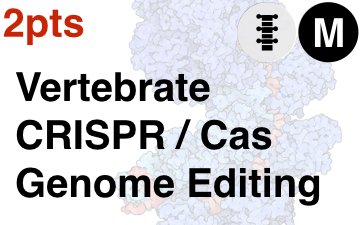
Sorry, there is no photo available. If you have one, please submit
here
.
Task : Use modified bacterial DNA segments (CRISPRs) to silence, enhance, or otherwise alter the genes of a vertebrate organism.
Graphic by Wikipediacommons.wikimedia.org/wiki/File:181-CasseroleAndCRISPR_1vy8.tiff
Clustered regularly interspaced short palindromic repeats(CRISPR, pronounced crisper[2]) are segments of prokaryoticDNA containing short repetitions of base sequences. Each repetition is followed by short segments of “spacer DNA” from previous exposures to a bacteriophage virus or plasmid.[3] The CRISPR/Cas system is a prokaryotic immune system that confers resistance to foreign genetic elements such as those […] read more

Software Development
PROJECT CARD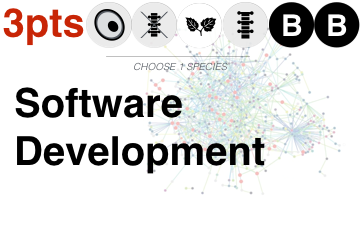
Sorry, there is no photo available. If you have one, please submit
here
.
Task: Design a computer program for analyzing genetic data.
Software development is the process of computer programming, documenting, testing, and bug fixing involved in creating and maintaining applications and frameworks involved in a software release life cycle and resulting in a software product. The term refers to a process of writing andmaintaining the source code, but in a broader sense of the term it […] read more

Whole Genome Sequencing
PROJECT CARD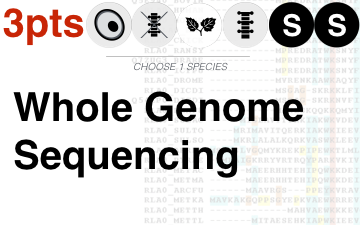
Sorry, there is no photo available. If you have one, please submit
here
.
Task : Sequence the entire genome of an organism of your choosing.
Graphic by Miguel Andradecommons.wikimedia.org/wiki/File:RPLP0_90_ClustalW_aln.gif
Whole genome sequencing (also known as WGS, full genome sequencing, complete genome sequencing, or entire genome sequencing) is a laboratory process that determines the complete DNAsequence of an organism’s genome at a single time. This entails sequencing all of an organism’s chromosomal DNA as well as DNA contained in the mitochondria and, for plants, in […] read more

Rare Disease Gene Study
PROJECT CARD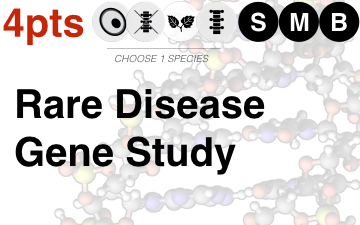
Sorry, there is no photo available. If you have one, please submit
here
.
Task: Identify a new rare disease gene and study its function in a model system.
Graphic by Wikipediacommons.wikimedia.org/wiki/File:DNA_Structure%2BKey%2BLabelled.pn_NoBB.png
A rare disease is any disease that affects a small percentage of the population. Most rare diseases are genetic, and thus are present throughout the person’s entire life, even if symptoms do not immediately appear. Many rare diseases appear early in life, and about 30 percent of children with rare diseases will die before reaching […] read more

Invertebrate Cytogenetic Analysis
PROJECT CARD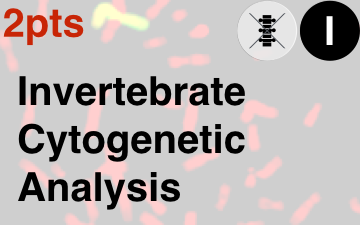
Sorry, there is no photo available. If you have one, please submit
here
.
Task: Investigate chromosome arrangements, forms, and behaviors in an invertebrate model organism.
Graphic by Stefan Mullercommons.wikimedia.org/wiki/File:Chr2_orang_human.jpg
Cytogenetics is a branch of genetics that is concerned with the study of the structure and function of the cell, especially the chromosomes.[1] It includes routine analysis of G-banded chromosomes, other cytogenetic banding techniques, as well as molecular cytogenetics such as fluorescent in situhybridization (FISH) and comparative genomic hybridization (CGH). (From: Wikipedia, June 2016) read more